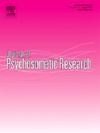心脏手术合并体外循环患者运动恐惧症的潜在类型及影响因素:一项前瞻性纵向研究
IF 3.3
2区 医学
Q2 PSYCHIATRY
引用次数: 0
摘要
背景:运动恐惧症在心脏手术后体外循环(CPB)患者中很常见,影响他们的恢复和健康。本研究旨在探讨运动恐惧症的发展轨迹及其影响因素,为个性化干预提供依据。方法采用连续抽样方法,在中国南方某三级医院进行前瞻性纵向研究,纳入301例于2023年1 - 7月行CPB心脏手术的患者。在ICU转院、出院以及出院后1个月和3个月进行评估,采用坦帕运动恐惧症量表、医院焦虑和抑郁量表(HADS)、运动社会支持量表(ses)和疲劳严重程度量表(FSS)等。潜在类别增长模型(LCGM)确定运动恐惧症轨迹,多元逻辑回归分析影响因素。该研究遵循STROBE指南。结果确定了三种不同的运动恐惧症轨迹:高水平快速下降(1,25%),持续低水平(2,64%)和高水平缓慢下降(3,10%)。疼痛、疲劳、异常BMI、就业状况和低至中度灌注是高运动恐惧等级(1级和3级)的重要危险因素。结论心脏手术伴CPB患者出院后3个月内可出现3种类型的运动恐惧症。在临床实践中,根据不同类型的运动恐惧症的不同特征进行早期识别和有针对性的干预,有助于提高患者的康复和术后生活质量。本文章由计算机程序翻译,如有差异,请以英文原文为准。
The latent class and influencing factors of kinesiophobia in patients after cardiac surgery with cardiopulmonary bypass: A prospective longitudinal study
Background
Kinesiophobia is common in patients after cardiac surgery with cardiopulmonary bypass (CPB), affecting their recovery and well-being. This study aimed to explore kinesiophobia trajectories and their influencing factors to inform personalized interventions.
Methods
A prospective longitudinal study was conducted in a tertiary hospital in southern China, enrolling 301 patients who underwent cardiac surgery with CPB between January and July 2023 via continuous sampling method. Assessments were conducted at ICU transfer, discharge, and 1 and 3 months after discharge, using the Tampa Scale for Kinesiophobia, Hospital Anxiety and Depression Scale (HADS), Social Support for Exercise Scale (SSES), and Fatigue Severity Scale (FSS), among others. Latent class growth modeling (LCGM) identified kinesiophobia trajectories, and multiple logistic regression analyzed influencing factors. The study adhered to STROBE guidelines.
Results
Three distinct kinesiophobia trajectories were identified: high-level rapid decline (Class 1, 25 %), persistent low-level (Class 2, 64 %), and high-level slow decline (Class 3, 10 %). Pain, fatigue, abnormal BMI, employment status, and low-to-moderate perfusion were significant risk factors for membership in the higher kinesiophobia classes (Class 1 and Class 3).
Conclusions
Patients undergoing cardiac surgery with CPB can be classified into three types of kinesiophobia within 3 months post-discharge. In clinical practice, early identification and tailored interventions based on the distinct characteristics of different kinesiophobia categories can help improve patients' recovery and postoperative quality of life.
求助全文
通过发布文献求助,成功后即可免费获取论文全文。
去求助
来源期刊
CiteScore
7.40
自引率
6.40%
发文量
314
审稿时长
6.2 weeks
期刊介绍:
The Journal of Psychosomatic Research is a multidisciplinary research journal covering all aspects of the relationships between psychology and medicine. The scope is broad and ranges from basic human biological and psychological research to evaluations of treatment and services. Papers will normally be concerned with illness or patients rather than studies of healthy populations. Studies concerning special populations, such as the elderly and children and adolescents, are welcome. In addition to peer-reviewed original papers, the journal publishes editorials, reviews, and other papers related to the journal''s aims.

 求助内容:
求助内容: 应助结果提醒方式:
应助结果提醒方式:


